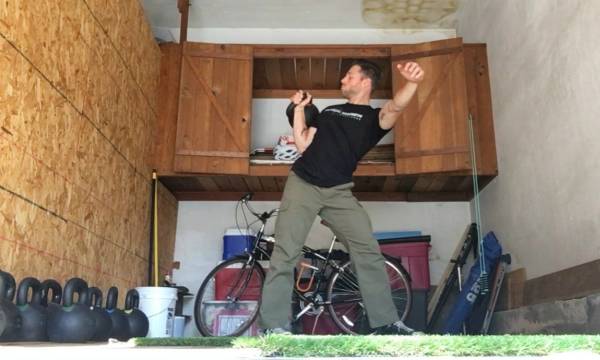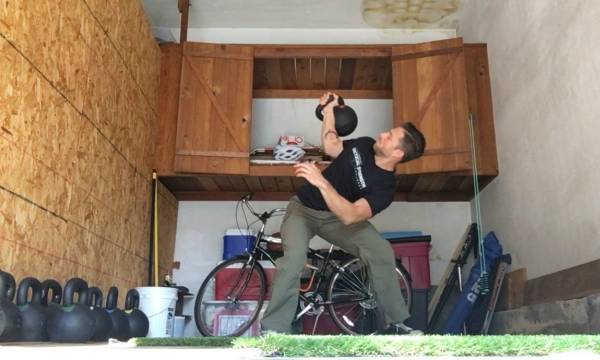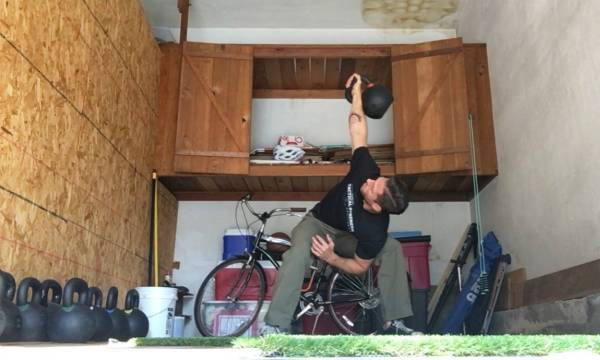If you know much about old-time performing strongmen, then chances are high that you’ve heard of the bent press before. Names like Arthur Saxon, Eugen Sandow, and Sig Klein probably ring a bell.
Typically performed with a barbell, strongmen would use the bent press as the preferred method to “hoist” a heavy load overhead with one arm. Arthur Saxton once did a bent press with 371 lbs! Somewhere between then and now the bent press has become more foreign, and I understand why.
If you know much about old-time performing strongmen, then chances are high that you’ve heard of the bent press before. Names like Arthur Saxon, Eugen Sandow, and Sig Klein probably ring a bell.
Typically performed with a barbell, strongmen would use the bent press as the preferred method to “hoist” a heavy load overhead with one arm. Arthur Saxton once did a bent press with 371 lbs! Somewhere between then and now the bent press has become more foreign, and I understand why.
The Foundation of the Bent Press
In Tackle The Kettlebell Bent Press: Part 1, I talked about building a foundation for the bent press with two skills; the arm bar and bent arm bar. I also noted that a great bent press starts with an excellent bent arm bar and a great bent arm bar starts with an excellent arm bar.
If you missed part one, make sure to go back and read it before continuing. Taking the time to establish a solid foundation with the two lifts mentioned is absolutely critical to successfully completing the bent press. If you can’t perform a great arm bar, then don’t perform the bent arm bar. If you can’t perform a great bent arm bar, then don’t attempt the bent press and any of the variations we’ll go over today.
The focus now is getting to the full bent press. I’ll go over a couple exercises I like to use to prep and fine-tune the lift and also go through my step-by-step thought process in performing a successful bent press. IronTamer Dave Whitely has a great book titled Taming the Bent Press, and much of what I mention in this article, and my prior article on the bent press, has been adopted from his book. If you want to master the bent press, grabbing a copy of his book would be a great idea.
Think Under, Not Up
It seems logical that when putting a weight over your head the thought process would be to visualize the weight going “up.” However there are actually some sneaky tension skills you can tap into when shifting the thought process to getting “under” the weight rather than pressing it “up.”
This was a skill we practiced at my SFG Level 1 cert during our pressing session—arguably the most enjoyable part of the weekend. We worked on wedging ourselves under the bell rather than simply pressing the bell overhead. The result was a much tighter pack in the shoulder and a stronger press overall. It’s a little easier to practice in a strict military press, and I’ve got three great drills to help apply it to the bent press.
The Half-Kneeling Bent Arm Bar
This is the first exercise where you’ll actually be performing a bent press, except from a half kneeling position rather than standing. The half kneeling position will take your lower half out of the equation and allow you to focus on getting under the bell rather than pressing it overhead.
Here’s what it looks like:
You’ll note that in order to do this drill you’ll need to have ability to properly side rack the bell. This gets back to the foundational drills (the arm bar and bent arm bar) that I spoke about in the first article.
- Once you’ve side-racked the bell, the thought process should shift to “falling away from the bell” in what will be more or less a diagonal hip hinge.
- As you fall forward, your arm begins to straighten, and the bell ends up overhead. The actual height of the bell from the floor will change very little from the start to the end of the lift.
- Once your arm is locked out, simply sit up. Congratulations, you’ve just done your first bent press.
The Elbow Switch
This is probably one of my favorite bent press drills as it not only helps practice the idea of getting under the bell, but also helps you with the timing of the bent press itself.
My recommendation is to do a half kneeling bent press to begin. From there you’ll start to straighten the bottom arm while simultaneously bringing the loaded arm back into a side rack position. Once your bottom arm is extended and the loaded arm racked, fall (with control) into another half kneeling bent press. The bottom arm slowly gets closer to the floor as the loaded arm begins to extend overhead.
Here’s what the elbow switch looks like:
As you can tell it’s a little tricky. This timing drill will really help tie together your bent press. Grab a light bell, probably a size lighter than you think you would use, and get to work. You’ll notice that it’s not as easy as it seems at first but with continued, focused practice, you’ll see the carry over into the full bent press. I’d recommend practicing with low reps of 1-3 on each side. When you can successfully do one or both of these drills, you’re ready for the full bent press.
Breaking Down the Bent Press
Essentially, at this point you’ve already bent pressed and all that’s left is to perform the lift from a standing position. Here’s the play-by-play on how to break down the bent press.
Step 1: Clean and side rack the bell.
Step 2: Shift your hip and adjust your stance to your personal preference.

Step 3: Start to fall away until you feel your bicep start to grab to support the bell. From this point on you’re fully under tension.

Step 4: Continue to fall away from the bell as your loaded arm begins to straighten.
Step 5: Attain a solid lockout. Your loaded arm should line up over your opposite hip, knee, and ankle forming what Dave Whitely refers to as your “structural column of support.”

Step 6: Recover from the bottom position by standing up with the bell over your head.

Step 7: Bring the bell down to the clean position, with assistance if needed. Shake it out and repeat on the other side.
Put It Together
Remember, the bent press is a skill, and like all skills it requires repeated, focused practice. But don’t let the complexity of the bent press deter you from learning how to perform the lift; learning how to properly perform the bent press can increase your overall shoulder stability and mobility.
Regardless of your competency level, first build a strong foundation with the arm bar and bent arm bar. Once you feel confident in each of those moves, you can begin to play around with some skills to help get you closer to the full bent press—the half kneeing bent press and the elbow switch. There are plenty more movements that can help improve the bent press; these two are simply a couple of my favorites.
Once you’ve reached the ability to properly perform a full bent press, have some fun with it! I love adding it in the mix with get ups and windmill flows. I’ll train heavy some days with singles and use a lighter load as a warm-up on other days. Also, the bent press doesn’t end at the kettlebell. Barbell bent presses present an entirely new challenge. That being said, I do feel the kettlebell provides the most useful tool in teaching and learning the bent press.
Do not miss Tackle The Kettlebell Bent Press: Part 1. More on kettlebell training: Make Turkish Get Ups Your Best Movement






